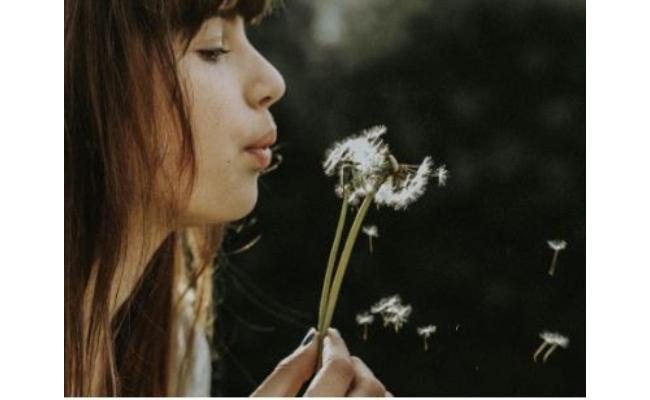Breathing Exercises For A Healthy Body And Mind

Pranayama is an ancient Indian science that deals with the breath. The term can be broken down into its Sanskrit roots: prana meaning “vital life force,” yama meaning “control,'' and ayama meaning “extension” or “expansion.” In essence, pranayama involves controlling, extending, shortening, and otherwise control of the breath (prana). Pranayama appears in many Vedic scriptures, in which a huge range of purposes are detailed, such as purification, achieving liberation, focusing the mind, steadying the body, and as an adjunct to meditation. Breathing exercises are a way to manipulate the breath to control our mental, physical, and emotional state. Different breathing exercises each, in turn, will have different effects on our
physiology, depending on what they manipulate.
According to this study (1) "The way we breathe directly affects the chemistry of our brains in a way that can enhance our attention and improve our brain health." According to another study (2) "Slow breathing reduces pain". Breathing is so utterly powerful that Yogic breathing practices "helped alleviate severe depression in people who did not fully respond to antidepressant treatments." (3). People who have asthma also stand to benefit from breathing exercises, as "people who continue to get problems from their asthma, despite receiving standard treatment, experience an improved quality of life when they are taught breathing exercises." (4) In short, regular practice of different kinds of breathing exercises are a
powerful and heavily underestimated way to control your mind and your body. Now that we know that breathing exercises are important, what do we do? I've come up with a group of breathing exercises that are both simple to do and effective practices. Please take some time to practice each of these at least once, and then you can form your own practice from there!
Alternate Nostril breath (Nadi Shodhan)
Alternate nostril breathing, also known as Nadi Shodhan, is a breathing exercise that you may be familiar with. It allows the right (creative) and left (logical) hemispheres of our brain to balance each other out. The end result is a calm and relaxed feeling in the mind and body.
1. exhale from one nostril (covering the other with a finger),
2. inhale from that nostril again,
3. close that nostril and exhale from the other,
4. inhale from that nostril again.
This is one round.
Bellows breath (Bhastrika):
Bhastrika is a breathing exercise that involves rapid and forceful inhalations and exhalations, along with raising (in the inhale) and lowering (in the exhale) your arms, in order to charge the body up with energy. After one or two rounds it is easy to notice a feeling of alertness and a spike in mental clarity. You might feel lightheaded, and that's okay!
Bee breath (Brahmari):
This breathing technique is especially useful if you tend to feel stressed, agitated, or anxious. It quickly calms the mind in a way that you would never expect. Even though it looks odd, the Bee breath essentially blocks off your senses and in turn calms you down.
Skull Shining breath (Kapalbhati):
Kapalbhati breathing is one that really stimulates your entire body, especially your abdominal area. After a couple of rounds, your core muscles and diaphragm are exhausted! Kapalbhati involves an active, forceful exhalation, and a passive inhalation. In other words, you purposefully exhale, and your body will compulsively inhale - automatically. Repeat these forceful exhalations (all from the nose) around 20-30 times, constituting 1 round.
Watch the video for a better understanding.
Victorious breath (Ujjayi):
A staple in many yoga classes, Ujjaji breathing can be done alone or during movement. It takes a few minutes to learn, but after that, the calming effects are noticeable. This breathing can be done anytime, anywhere! Put simply, it involves constricting the back of the throat (like you are defogging a window) and breathing, either through your mouth or nose (although nose is preferred). The video does a better job of explaining.
Ujjayi breathing can be done whenever. I like to do it before I go to bed, and even a couple of breaths before a meal.
Box Breathing
Box breathing is flexible and straightforward. It involves
1. breathing in
2. holding your breath
3. exhaling
4. and holding your breath all for the same duration. It is easily customisable, as I may do it for 12 seconds each, but you may only be able to do it for 5 seconds each at the beginning.
This breathing exercise is something that you can improve on a little bit every day. It helps you regulate your breath better and gain control of it, even when you have a slight urge to breathe. Naturally, it will improve lung capacity, so it's useful for those who tend to feel out of breath. Although counterintuitive, breath holding causes increased blood flow to the brain, and thus increases oxygenation in the brain (5).
Wim Hof Breathing:
This breathing technique was pioneered by Wim Hof, who is also known as The Iceman. He is a Dutch extreme athlete noted for his ability to withstand freezing temperatures. He has Guinness world records for swimming under ice, prolonged full-body contact with ice, and holds the record for a barefoot half-marathon on ice and snow. He has credited his breathing technique for helping him withstand extreme temperatures. Even if you are not interested in that, this breathing exercise remains powerful. It is an adaptation of the Tibetan Tummo breathing style, translating to 'Breath of fire'. After following along with the video, you will understand why that's the name. At the end of it, I feel energised and have a clear mind with a
relaxed body.
By Moksh Mehta - The author is a Grade 12 student at the International School of Hyderabad.





